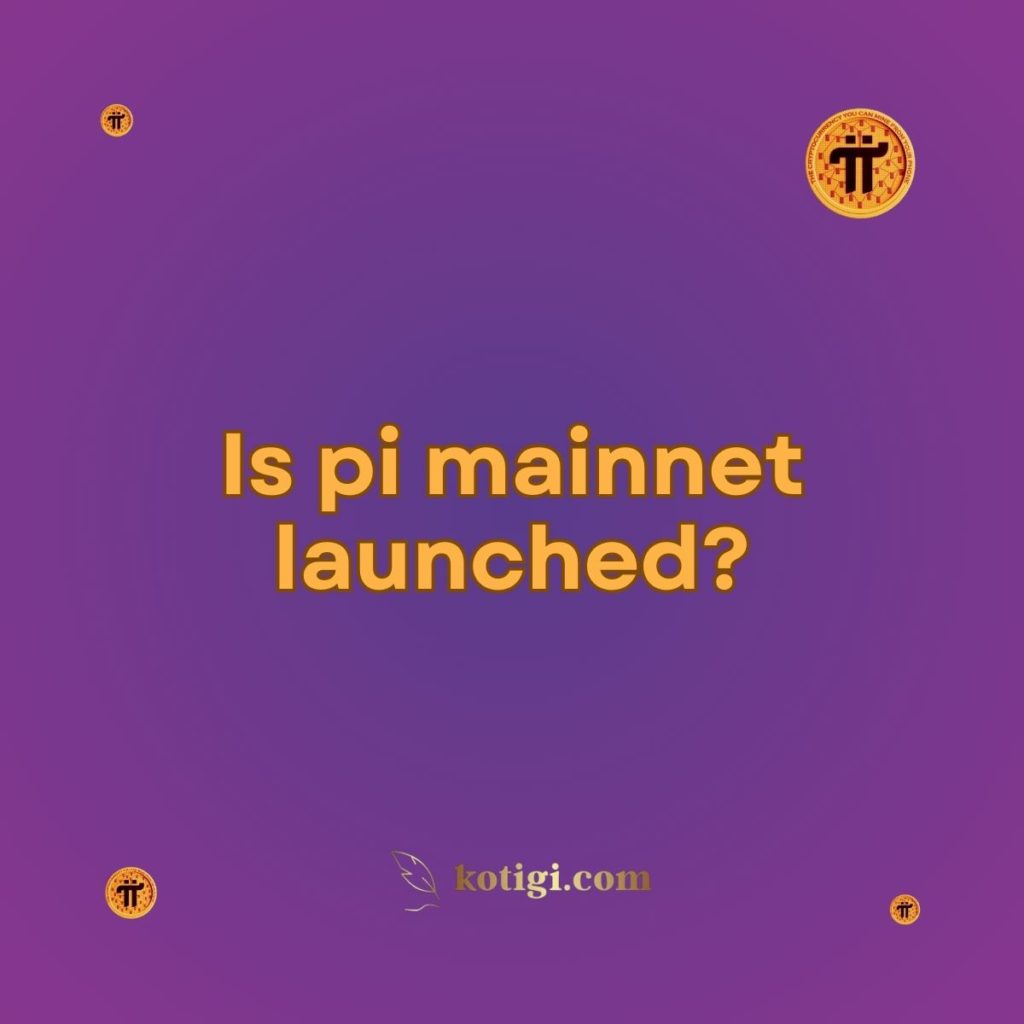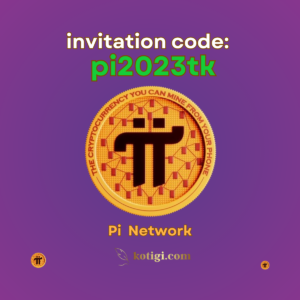
Is pi mainnet launched?
Pi Network will officially transition to the Open Network period of Mainnet at 8:00AM UTC on February 20, 2025. As of now, Pi Network has not yet fully launched its Mainnet. Pi is still in the enclosed Mainnet phase, which means it is not fully integrated with external networks or exchanges. However, this phase allows Pioneers to continue using the Pi app and participate in network testing, while awaiting the fully open Mainnet. Read on to learn more about Pi Network’s progress and what the Mainnet launch means for Pi users.
Introduction
Is Pi Mainnet Launched? Pi Network will officially transition to the Open Network period of Mainnet at 8:00AM UTC on February 20, 2025. As of now, Pi Network has not yet fully launched its Mainnet. Pi is still in the enclosed Mainnet phase, which means it is not fully integrated with external networks or exchanges. However, this phase allows Pioneers to continue using the Pi app and participate in network testing, while awaiting the fully open Mainnet. Read on to learn more about Pi Network’s progress and what the Mainnet launch means for Pi users.
Is Pi Mainnet Launched?
Pi Network has gained significant attention due to its unique approach to mobile cryptocurrency mining. Millions of users are actively mining Pi on their mobile devices, and many are eagerly awaiting the launch of the Pi Mainnet to see Pi’s full potential in the crypto space. But the big question remains: Is Pi Mainnet launched? While Pi has made considerable progress, its Mainnet has not yet fully launched. Let’s explore the current status of Pi’s Mainnet, what it entails, and what Pioneers can expect moving forward.
Understanding Pi’s Development Phases
What Is Pi Network?
Pi Network is a decentralized cryptocurrency that allows users to mine Pi coins using their smartphones. Created by a group of Stanford graduates, the goal of Pi Network is to make cryptocurrency mining more accessible to everyday users, removing the need for expensive and energy-intensive mining hardware.
Pi Network has attracted a global user base with millions of active “Pioneers” (as Pi users are called), thanks to its low-energy mobile mining and strong community support. The Pi app allows users to mine Pi by simply clicking a button every 24 hours. However, as Pi is still in development, users are not yet able to trade their Pi coins on exchanges or use them in the broader cryptocurrency market.
Phases of Pi’s Development
Pi Network’s development roadmap consists of three key phases:
- Phase 1: Beta Launch
The initial phase of Pi Network focused on building its user base and testing the mobile mining system. This phase allowed early adopters to join the network and begin mining Pi. However, during this phase, Pi had no real-world value, and coins could not be traded or transferred outside the Pi ecosystem. - Phase 2: Testnet
In this phase, Pi entered a closed testing environment, where developers and selected users could test the network’s security, scalability, and functionality. The Testnet phase has been essential in ensuring that Pi is secure and can handle a large number of transactions. However, Pi is still not tradable on external exchanges, as the Testnet coins do not yet represent real value. - Phase 3: Mainnet (Enclosed Network)
Pi has transitioned into its Mainnet phase, but it is currently in what’s known as the “Enclosed Mainnet.” This means that while the blockchain is live, the network is not yet fully open to external connections. Users can continue mining, verifying transactions, and preparing for the open Mainnet, but Pi coins cannot yet be traded or used outside the network.
The Mainnet phase is critical because it will determine when Pi will gain real-world value and be available for trading on exchanges.
What Is the Enclosed Mainnet?
Transition to Enclosed Mainnet
The Pi Network is currently in its “Enclosed Mainnet” phase, a critical period where the network is fully operational but remains isolated from external exchanges and blockchains. During this phase, the development team is focused on ensuring the network’s security and scalability before opening it to the broader cryptocurrency ecosystem.
The enclosed Mainnet is part of Pi’s broader strategy to gradually transition towards a fully open, decentralized network. This enclosed period allows Pi to:
- Test its blockchain under real-world conditions.
- Conduct security audits to ensure the safety of transactions.
- Refine its KYC (Know Your Customer) process to ensure compliance with regulatory standards.
KYC and User Verification
One of the primary goals of the enclosed Mainnet phase is to complete the KYC verification process for all users. KYC is an essential step in ensuring that Pi Network is compliant with global regulatory standards. Users who wish to participate in the open Mainnet will need to complete their KYC verification. This process ensures that all Pi holders are legitimate users, preventing fraud and ensuring that Pi is used responsibly in the future.
During the enclosed Mainnet, users are encouraged to complete their KYC to be fully prepared for the open Mainnet launch.
Pi Wallet and Transactions
Even though Pi is in its enclosed Mainnet phase, users can still interact with the Pi blockchain. Pi holders can use the Pi Wallet, which allows them to conduct transactions within the enclosed Pi ecosystem. However, these transactions are limited to the Pi Network itself and cannot be transferred to external wallets or exchanges.
This means that while users can send and receive Pi within the network, they cannot yet trade or sell their Pi coins on external platforms like Binance or Coinbase. The enclosed Mainnet is a way for the Pi team to test the functionality of the network before opening it up to external markets.
When Will the Open Mainnet Launch?
Factors Influencing the Open Mainnet Launch
The launch of Pi’s open Mainnet is highly anticipated, but there is no specific date for when it will occur. Several factors will determine when Pi transitions from the enclosed Mainnet to the open Mainnet, including:
- Network Security: The Pi development team is conducting thorough security audits to ensure that the network is secure and can handle large-scale transactions without vulnerabilities.
- KYC Completion: The success of Pi’s open Mainnet launch depends on the completion of the KYC verification process for all users. This ensures that Pi is compliant with regulations and that only verified users can participate in the network.
- Ecosystem Development: Pi’s development team is also focused on building a robust ecosystem around the Pi cryptocurrency. This includes encouraging the development of decentralized apps (dApps) that use Pi as a medium of exchange and ensuring that Pi can be integrated into real-world use cases.
Estimated Timeline for Open Mainnet
While the exact timeline for the open Mainnet launch is unknown, the Pi team has expressed their commitment to launching the network as soon as it is ready. The open Mainnet will be the final step in Pi’s journey, allowing Pi coins to gain real-world value and be traded on cryptocurrency exchanges.
It is likely that the open Mainnet will launch once the Pi development team is confident in the network’s security and after a significant number of users have completed the KYC process. Until then, users can continue mining Pi and participating in the enclosed Mainnet environment.
What Will Happen After Pi’s Open Mainnet Launch?
Pi Gains Real-World Value
Once the open Mainnet is launched, Pi coins will gain real-world value. This means that Pi will be tradable on cryptocurrency exchanges, and users will be able to sell, trade, or exchange their Pi coins for other cryptocurrencies or fiat currencies like USD or EUR.
The transition to the open Mainnet will be the moment when Pi shifts from a test project to a fully functional cryptocurrency with a real-world market value.
Trading Pi on Exchanges
After the open Mainnet launch, Pi will likely be listed on major cryptocurrency exchanges. This will allow users to trade Pi in a similar way to how they trade Bitcoin, Ethereum, or other cryptocurrencies. Pi holders will be able to exchange their Pi coins for other digital assets or fiat currencies, depending on which exchanges support Pi.
The listing of Pi on exchanges will open up new opportunities for Pi users, but it also introduces market risks, such as price volatility and liquidity challenges.
Use Cases for Pi
The open Mainnet launch will also enable Pi to be used in real-world applications. Developers are working on building decentralized applications (dApps) that will use Pi as a form of payment or utility token. These applications could range from online marketplaces to financial services, where users can use Pi to buy goods and services.
The development of these use cases will be critical in determining the long-term success and adoption of Pi as a cryptocurrency.
Challenges and Risks of Mainnet Launch
Security and Decentralization
While the Pi Network team is working hard to ensure the network’s security, there are always risks associated with launching a new blockchain. The transition from an enclosed Mainnet to an open Mainnet can introduce security vulnerabilities if not properly managed. Ensuring that Pi remains decentralized and secure will be one of the biggest challenges for the development team.
Market Volatility
Once Pi is tradable on exchanges, it will be subject to the same market forces as other cryptocurrencies. This means that Pi’s price could experience volatility, depending on market demand and overall sentiment. Early adopters may see significant price fluctuations once Pi becomes available for trading.
Regulatory Compliance
As Pi gains real-world value and becomes tradable, it will need to comply with regulatory standards in various countries. Cryptocurrencies are subject to regulations that vary by region, and Pi will need to navigate these rules to ensure that it remains compliant with local laws.
Conclusion
So, has Pi Mainnet launched? The answer is yes, but only partially. Pi is currently in its enclosed Mainnet phase, where the network is operational but not yet fully open to the public. The open Mainnet launch is still pending, and several factors, such as network security and KYC verification, will determine when Pi is ready for full public release.
Until then, users can continue to mine Pi and prepare for the exciting opportunities that the open Mainnet will bring. The transition to the open Mainnet will mark a significant milestone for Pi, allowing it to gain real-world value and be traded on exchanges.
Key Takeaways:
- Pi Network will officially transition to the Open Network period of Mainnet at 8:00AM UTC on February 20, 2025.
- Pi’s Mainnet is partially launched, but it is still in the enclosed phase.
- KYC verification is crucial for users who want to participate in the open Mainnet.
- The open Mainnet launch will enable Pi to gain real-world value and be tradable on exchanges.
- Security, KYC, and ecosystem development are key factors that will determine the timeline for the open Mainnet.
- Pi’s open Mainnet will bring opportunities but also risks, such as market volatility and regulatory challenges.





